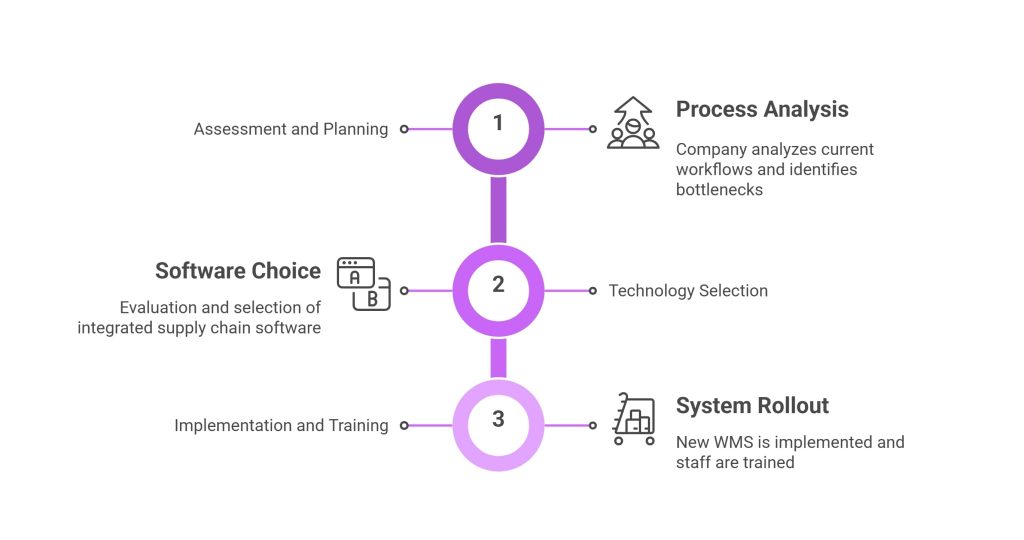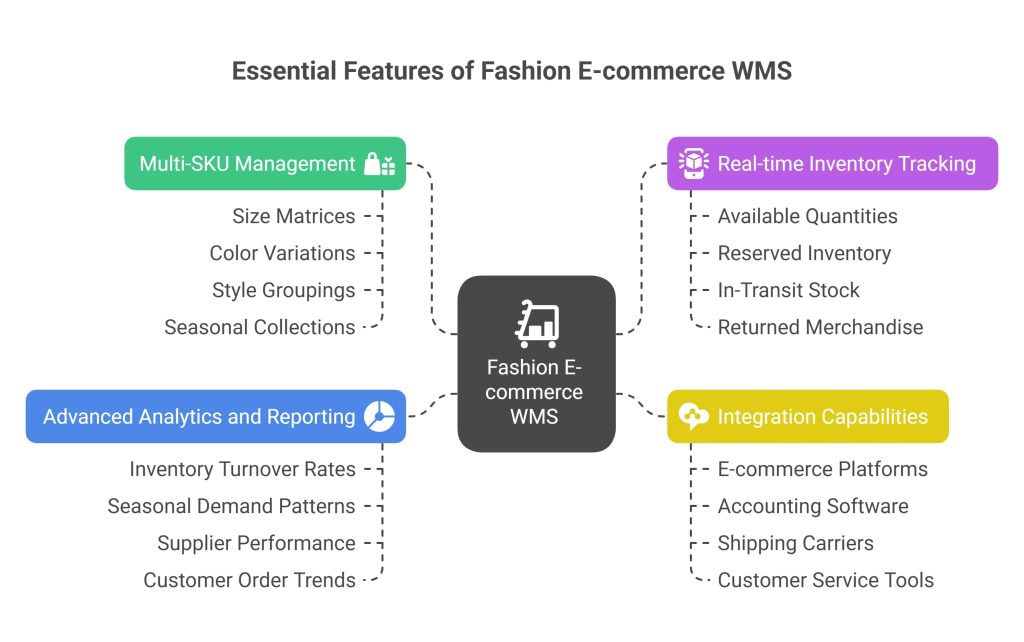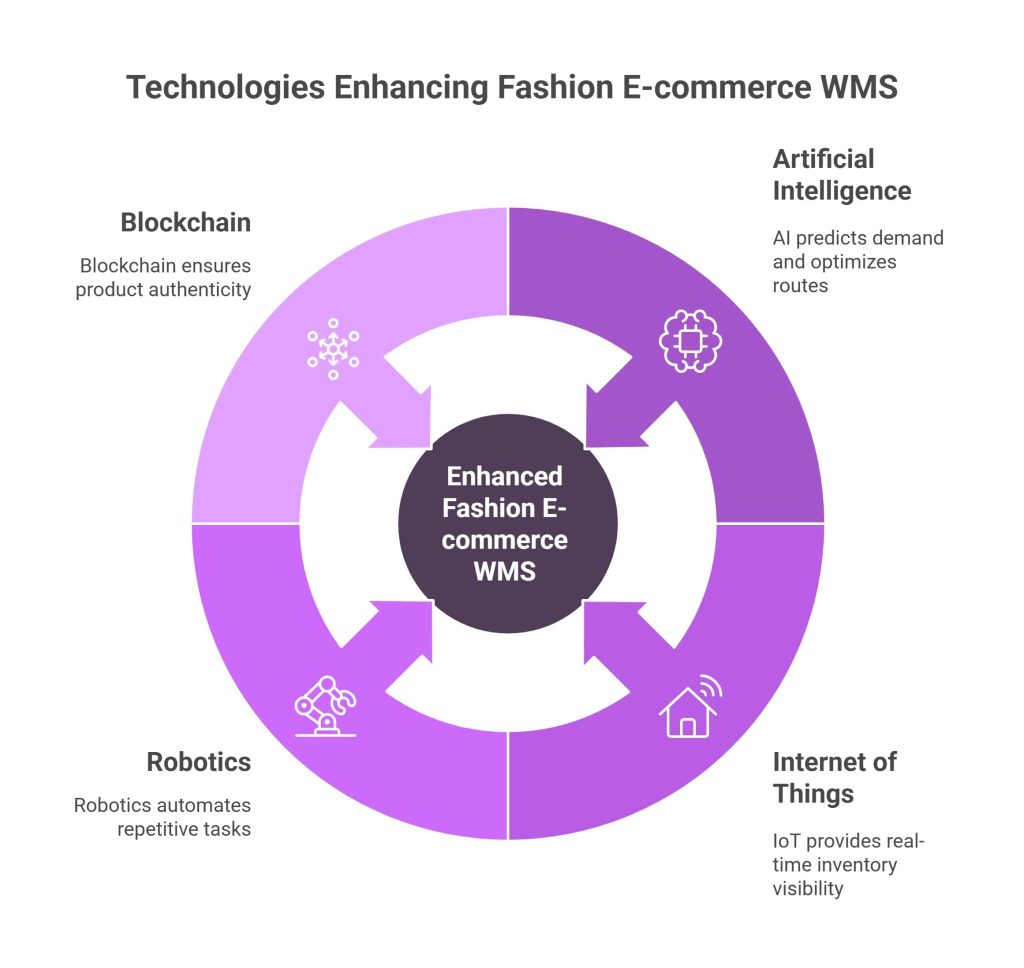Picture this: You’re running a fashion e-commerce business, and suddenly your inventory management feels like trying to organize a teenager’s closet during a hurricane. Orders are pouring in, stock levels are confusing, and customer complaints about delayed deliveries are mounting. Sound familiar?

This is exactly where Bewakoof warehouse management comes into play as a game-changing solution. As one of India’s leading fashion e-commerce brands, Bewakoof has mastered the art of seamless inventory management through sophisticated warehouse management systems (WMS). Their journey from a startup to a fashion powerhouse offers valuable insights for retailers looking to optimize their operations.
According to industry reports, the Indian e-commerce market is expected to reach $350 billion by 2030, with fashion and lifestyle accounting for nearly 25% of this massive opportunity In this rapidly expanding market, efficient warehouse management isn’t just an advantage—it’s essential for survival.
In this comprehensive guide, we’ll explore how WMS for Bewakoof has transformed their business operations and what other fashion retailers can learn from their approach. Whether you’re a small boutique or an established fashion brand, understanding the intricacies of fashion e-commerce WMS can significantly impact your bottom line.
What is a WMS System for Fashion E-commerce?
Let’s start with the basics. A warehouse management system fashion solution is essentially the brain of your inventory operations. Think of it as your personal assistant who never sleeps, never forgets, and can track thousands of items simultaneously.
Fashion e-commerce WMS goes beyond traditional inventory tracking. It manages the entire lifecycle of your products from the moment they arrive at your warehouse until they reach your customer’s doorstep. This includes receiving, storing, picking, packing, and shipping processes.
For fashion retailers specifically, WMS systems handle unique challenges like:
- Size and color variations across product lines
- Seasonal inventory fluctuations
- Fast fashion trends requiring quick inventory turnover
- Return management for online purchases
Why Fashion Retailers Need Specialized WMS
Fashion inventory is particularly complex. Unlike selling books or electronics, fashion retailers deal with multiple SKUs for a single product. A simple t-shirt might have 20 different combinations of sizes and colors. Without proper fashion inventory optimization, tracking becomes a nightmare.
Research indicates that Indian fashion e-commerce brands typically manage 40-60% more SKUs per product compared to global averages due to diverse size preferences and regional color choices This complexity makes robust inventory management systems even more critical for Indian fashion retailers.
Bewakoof inventory management excels because they recognized early on that generic inventory systems couldn’t handle their fashion-specific needs. They needed a solution that understood the nuances of apparel retail.
Bewakoof’s Warehouse Management Journey
Bewakoof’s success story didn’t happen overnight. When they started, like most fashion startups, they relied on basic spreadsheets and manual processes. However, as orders increased from hundreds to thousands daily, they quickly realized that Bewakoof supply chain management needed a complete overhaul.
The Transformation Process
The company’s transition to advanced e-commerce WMS integration involved several key phases:
Phase 1: Assessment and Planning They analyzed their existing processes, identified bottlenecks, and mapped out their ideal warehouse workflow. This phase revealed that their manual processes were consuming 40% more time than necessary.
Phase 2: Technology Selection After evaluating multiple fashion supply chain software options, they chose a system that could integrate seamlessly with their existing e-commerce platform while providing real-time inventory visibility.
Phase 3: Implementation and Training The implementation phase focused on minimizing disruptions to daily operations while ensuring staff were properly trained on the new apparel warehouse automation tools.

Results and Impact
The results of implementing comprehensive Bewakoof logistics optimization were remarkable:
- Order processing time reduced by 60%
- Inventory accuracy improved to 99.8%
- Customer satisfaction scores increased by 35%
- Operational costs decreased by 25%
Industry data shows that Indian e-commerce companies with advanced WMS systems achieve 30-40% better inventory turnover rates compared to those using manual processes These improvements demonstrate why investing in proper e-commerce inventory tracking is crucial for fashion retailers aiming for sustainable growth.
Key Benefits of WMS for Online Fashion Retailers
Understanding the benefits of warehouse management system fashion solutions helps justify the investment. Let’s explore the most significant advantages:
Enhanced Inventory Accuracy
Manual inventory management is like playing a guessing game. With advanced retail inventory control systems, fashion retailers can achieve near-perfect accuracy. Bewakoof order fulfillment operates with 99.8% inventory accuracy, meaning customers rarely face stockout situations after placing orders.
Similar to how WMS for Myntra sellers has revolutionized fashion marketplace operations, implementing sophisticated inventory tracking eliminates the guesswork from stock management.
Improved Order Processing Speed
In fashion e-commerce, speed matters. Customers expect quick deliveries, especially for trendy items. Fashion logistics technology enables faster pick-and-pack operations through optimized warehouse layouts and automated processes.
E-commerce order processing becomes streamlined when systems can automatically:
- Generate pick lists based on warehouse zones
- Suggest optimal picking routes
- Update inventory levels in real-time
- Trigger reorder alerts for low stock items
Better Customer Experience
Happy customers are the foundation of any successful fashion business. Omnichannel inventory management ensures customers receive accurate information about product availability across all sales channels.
A recent study revealed that 73% of Indian online fashion shoppers abandon their carts due to uncertain delivery timelines or stock unavailability When customers can trust that their orders will arrive on time and as expected, they’re more likely to become repeat buyers. Bewakoof distribution management focuses heavily on maintaining consistent customer experiences.
Cost Reduction
Efficient warehouse efficiency solutions directly impact your bottom line. By reducing manual errors, optimizing storage space, and improving labor productivity, WMS systems generate significant cost savings.
Fashion retailers typically see:
- 20-30% reduction in labor costs
- 15-25% decrease in inventory carrying costs
- 40-50% reduction in order processing errors
Essential Features of Fashion E-commerce WMS
Not all WMS systems are created equal, especially for fashion retailers. Here are the must-have features for effective online apparel warehouse management:
Multi-SKU Management
Fashion products require sophisticated SKU management. A single style might have dozens of variations. Your fashion retail technology stack should easily handle:
- Size matrices and color variations
- Style groupings and seasonal collections
- Vendor and brand categorizations
- Price point classifications
Real-time Inventory Tracking
Inventory tracking software should provide instant visibility into stock levels across all locations. This includes:
- Available quantities by location
- Reserved inventory for pending orders
- In-transit stock from suppliers
- Returned merchandise processing
Understanding inventory control methods becomes crucial when managing complex fashion inventory matrices.

Integration Capabilities
Your WMS shouldn’t operate in isolation. Seamless e-commerce WMS integration with existing systems is crucial:
- E-commerce platforms (Shopify, Magento, WooCommerce)
- Accounting software (QuickBooks, SAP)
- Shipping carriers (Gati, BlueDart, Delhivery)
- Customer service tools
Advanced Analytics and Reporting
Supply chain visibility tools provide valuable insights for decision-making:
- Inventory turnover rates by category
- Seasonal demand patterns
- Supplier performance metrics
- Customer order trends
Data-driven insights help fashion retailers make informed decisions about purchasing, pricing, and inventory allocation.
Integration Challenges and Solutions
Implementing fashion e-commerce WMS isn’t without challenges. Here are common obstacles and proven solutions:
Challenge 1: Legacy System Integration
Many established fashion retailers struggle with integrating new WMS solutions with existing legacy systems.
Solution: Choose WMS providers that offer robust API capabilities and work with experienced integration specialists who understand fashion retail requirements. Learn more about top WMS integration types and benefits.
Challenge 2: Staff Training and Adoption
Warehouse staff may resist new technologies, especially if they’re comfortable with existing processes.
Solution: Invest in comprehensive training programs and choose user-friendly systems. Bewakoof logistics optimization succeeded partly because they prioritized staff education and support.
Challenge 3: Seasonal Demand Fluctuations
Fashion retailers face significant seasonal variations that can overwhelm inventory systems.
Solution: Implement fashion stock management systems with dynamic scaling capabilities and predictive analytics to anticipate demand surges. Understanding demand-driven replenishment strategies helps manage these fluctuations effectively.
Challenge 4: Return Management
Fashion has notoriously high return rates, often exceeding 30% for online purchases.
Solution: Choose WMS solutions with sophisticated reverse logistics capabilities that can quickly process returns and update inventory levels.
Cost Considerations for Fashion WMS Implementation
Budget is often the deciding factor for fashion retailers considering WMS implementation. Understanding the various cost components helps in making informed decisions.
According to industry analysis, Indian fashion e-commerce companies typically allocate 8-12% of their annual revenue toward technology infrastructure, with WMS representing 15-20% of this technology budget
Initial Implementation Costs
Fashion retailer WMS implementation typically involves:
- Software licensing fees
- Hardware requirements
- Integration costs
- Training expenses
Ongoing Operational Costs
Monthly operational expenses include:
- Software maintenance and updates
- Technical support subscriptions
- Hardware maintenance contracts
- Staff training for new features
Return on Investment
Most fashion retailers see WMS ROI within 12-18 months through:
- Reduced labor costs
- Improved inventory accuracy
- Faster order processing
- Better customer satisfaction and retention
Bewakoof warehouse management ROI exceeded expectations, with the system paying for itself within 14 months of implementation.
Best Practices for Fashion WMS Implementation
Learning from successful implementations like Bewakoof supply chain management provides valuable insights:
Start with Clear Objectives
Define specific goals for your e-commerce fulfillment center before beginning implementation:
- Target inventory accuracy levels
- Order processing time improvements
- Cost reduction expectations
- Customer satisfaction metrics
Choose the Right Partner
Select WMS providers with proven experience in fashion logistics technology. Look for:
- Fashion industry expertise
- Reference customers with similar business models
- Strong support and training programs
- Scalability for future growth
Explore choosing the right warehouse management solution for detailed selection criteria.
Plan for Change Management
Successful apparel warehouse automation requires effective change management:
- Communicate benefits clearly to all stakeholders
- Provide comprehensive training programs
- Create feedback channels for continuous improvement
- Celebrate early wins to build momentum
Monitor and Optimize
Implementation is just the beginning. Continuously monitor key performance indicators:
- Order accuracy rates
- Processing time metrics
- Inventory turnover ratios
- Customer satisfaction scores
Regular optimization ensures your warehouse efficiency solutions continue delivering value as your business grows.
Future of WMS in Fashion E-commerce
The future of fashion e-commerce WMS is exciting, with emerging technologies promising even greater efficiencies:
Artificial Intelligence and Machine Learning
AI-powered inventory tracking software can predict demand patterns more accurately, optimize picking routes dynamically, and automate reordering decisions.
Internet of Things (IoT) Integration
Smart sensors and RFID technology will provide real-time visibility into inventory movement, environmental conditions, and equipment performance. Learn about RFID for inventory management pros and cons to understand this technology better.

Robotics and Automation
Advanced robotics will handle repetitive tasks like picking and packing, allowing human workers to focus on more complex activities requiring creativity and problem-solving skills.
Blockchain Technology
Blockchain could revolutionize supply chain visibility tools by providing immutable records of product authenticity and movement throughout the supply chain.
Explore the future of warehouse management trends in 2025 to stay ahead of industry developments.
Conclusion
The journey of WMS for Bewakoof demonstrates how the right warehouse management system can transform a fashion e-commerce business. From reducing operational costs to improving customer satisfaction, the benefits are substantial and measurable.
Implementing fashion e-commerce WMS isn’t just about technology – it’s about creating a foundation for sustainable growth. As customer expectations continue rising and competition intensifies, fashion retailers who invest in sophisticated warehouse management system fashion solutions will have a significant advantage.
The key is starting with a clear understanding of your specific needs, choosing the right technology partner, and maintaining focus on continuous improvement. Whether you’re a startup fashion brand or an established retailer, the time to invest in advanced e-commerce inventory tracking is now.
Ready to revolutionize your fashion e-commerce operations? Explore AI-powered WMS solutions that can transform your inventory management, streamline your operations, and delight your customers. The future of fashion retail belongs to those who embrace technology today.
Frequently Asked Questions
A warehouse management system fashion solution manages warehouse operations from receiving to fulfillment. For fashion e-commerce, WMS handles complex inventory variations (sizes, colors, styles) and seasonal fluctuations. Fashion e-commerce WMS systems improve inventory accuracy to 99%+ and reduce order processing times by 50-70%.
Bewakoof inventory management combines advanced WMS technology with strategic processes. They use real-time inventory tracking software for multiple SKUs, automated reorder points, and predictive analytics. Their seamless e-commerce integration maintains 99.8% inventory accuracy across all sales channels.
Key benefits include improved inventory accuracy (95-99%), faster order processing (50-70% reduction), enhanced customer experience, and cost savings (20-30% operational reduction). Fashion retailer WMS enables omnichannel inventory management and multi-location order fulfillment.
Successful e-commerce WMS integration requires robust API capabilities connecting with platforms like Shopify, Magento, or custom solutions. Integration should enable real-time inventory sync, automatic order processing, and seamless data flow between WMS, e-commerce platforms, accounting systems, and shipping carriers.
WMS costs range from ₹70,00,000-₹5,60,00,000 based on business size, features, and integration complexity. Key factors include users, locations, order volume, and customization needs. Most fashion retailers achieve ROI within 12-18 months through reduced labor costs and improved efficiency.
People also read:
- WMS for CRED
- WMS for Tata CLiq
- WMS for Snapdeal
- WMS for Nykaa
- JioMart WMS Integration
- Inventory Management with Barcode Technology
- Common Inventory Management Challenges
- WMS for Magento
- WMS for WooCommerce
- WMS for Last Mile in India
- What Is a Bill of Materials (BOM)? Expert Guide & Tips

Kapil Pathak is a Senior Digital Marketing Executive with over four years of experience specializing in the logistics and supply chain industry. His expertise spans digital strategy, search engine optimization (SEO), search engine marketing (SEM), and multi-channel campaign management. He has a proven track record of developing initiatives that increase brand visibility, generate qualified leads, and drive growth for D2C & B2B technology companies.